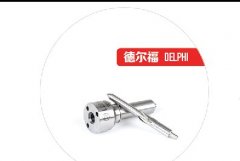เลขที่ 2 ถนน Handa เมือง Mazhu เมืองหยูเหยา

ประเภทและข้อมูลจำเพาะของหัวฉีดน้ำมัน
หัวฉีดน้ำมันมักจะจำแนกตามละอองสามารถแบ่งออกเป็น:
(1) หัวฉีดน้ำมันแรงดันต่ำ หัวฉีดน้ำมันนี้ใช้พลังงานจากการเผาไหม้อากาศเพื่อทำให้น้ำมันเชื้อเพลิงเป็นละออง ข้อดีของมันคือการใช้พลังงานต่ำในการทำให้เป็นละอองและคุณภาพของการทำให้เป็นละอองที่ดีขึ้นข้อเสียคือหัวฉีดน้ำมันมีโครงสร้างที่ซับซ้อนอุณหภูมิอุ่นอากาศถูก จำกัด และข้อกำหนดของหัวฉีดน้ำมันมีขนาดเล็กเหมาะสำหรับเตาความร้อนขนาดเล็กที่ไม่มีไอน้ำร้อนเกินไป